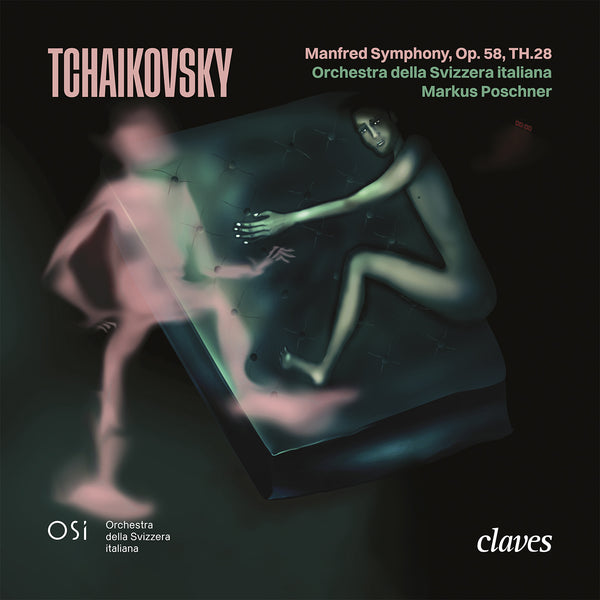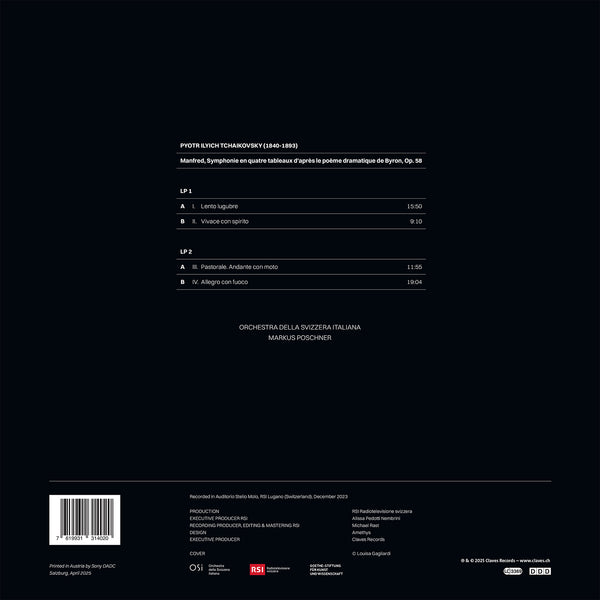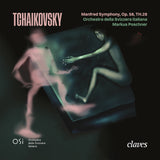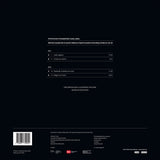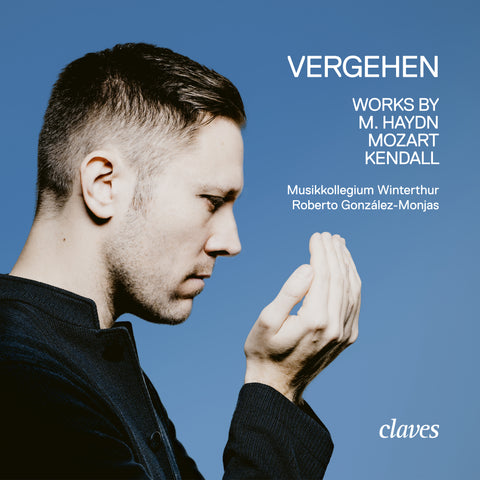(2026) Manfred, Symphonie en quatre tableaux d'après le poème dramatique de Byron, Op. 58
Category(ies): Orchestra Repertoire
Main Composer: Piotr Ilyich Tchaikovsky
Orchestra: Orchestra della Svizzera italiana
Conductor: Markus Poschner
CD set: Digital only
Catalog N°:
DO 3140/41
Release: 16.01.2026
EAN/UPC: 7619931314020
Or you can find this album online with the following links:
This album is now on repressing. Pre-order it at a special price now.
CHF 0.00
This album is no longer available on CD.
This album has not been released yet. Pre-order it from now.
CHF 0.00
This album is no longer available on CD.
VAT included for Switzerland & UE
Free shipping
This album is now on repressing. Pre-order it at a special price now.
CHF 0.00
This album is no longer available on CD.
This album has not been released yet.
Pre-order it at a special price now.
CHF 0.00
This album is no longer available on CD.
MANFRED, SYMPHONIE EN QUATRE TABLEAUX D'APRÈS LE POÈME DRAMATIQUE DE BYRON, OP. 58
«I tell you that this work is a loathsome one» – «The best of my symphonic works»
Pyotr Ilyich Tchaikovsky’s Manfred Symphony
A less suitable suggestion probably could not have been made by Mily Balakirev to his fellow composer Piotr Ilyich Tchaikovsky when in 1882 he sent him the programme for a four-movement symphony in the style of Hector Berlioz, based on Lord Byron’s ‘metaphysical’ drama Manfred, set in the Bernese Alps.
Tchaikovsky was suspicious of both the play as well as its author. Shortly after the premiere of Manfred on 11 March 1886 he wrote to Boris Jurgenson, the son of his publisher: «At your age as well as later, I could find no liking for Byron. He simply seemed to me unbearably boring. Much later I began to understand his strength, and yet many of his works […] still drive me to desolation». And he also felt a ‘hopeless coldness’ towards the programme, as he confessed to Balakirev at the outset. This coldness was partly due to the high regard Tchaikovsky had for Robert Schumann’s Manfred, op. 115 (1852) and – despite the huge success he had with orchestral programme music such as Romeo and Juliet (1870: no opus number), The Tempest, op. 18 (1873), Francesca da Rimini, op. 32 (1877) and the 1812 Overture, Op. 49 (1882) – he held a secret aversion to the genre: «It is a thousand times more pleasant to write without any programme! When I am composing a programme symphony, I feel like a charlatan swindling the public; I’m not paying them real money but worthless notes», he confessed to his former student Sergei Taneyev on 13 June 1885. However, because of his personal bond with Balakirev, he consented to compose the work.
At the centre of Byron’s drama stands the misanthropic nobleman Manfred, who is plagued throughout his life by guilt: for having practised black magic, for invoking spirits as well as for harbouring an incestuous love for his sister Astarte, who took her life as a result. Tired of existence, he himself now longs to die or at least to descend into madness, and yet the spirits he has summoned up refuse the fulfilment of his wish for ‘forgetfulness’, and a chamois hunter, rushing onto the scene, foils his suicide attempt on the Jungfrau mountain. A witch of the Alps promises help if he submits himself to her will but he haughtily declines. Like Orpheus, Manfred descends into the Underworld, from whose ruler Arimanes he demands his sister. When she appears, she does not forgive her brother but instead foretells his own imminent death.
From the drama’s meagre action Vladimir Stassov and Balakirev created a programme of four scenes, the first being a musical depiction of Manfred and his torments (brought on by himself, his guilt and the world at large), his escape into the Alps and his recollections of his beloved sister. There follows (in an inversion of the original order of events) a scene at a waterfall where Manfred invokes the Alpine fairy, before the simple but idyllic rustic life of the chamois hunter comes into focus. The fourth scene, which takes place in the Underworld, contains the most overt changes to Byron’s drama, offering a detailed depiction of a hellish orgy (which is not in Byron). Manfred’s wish to see his sister is granted here too but Astarte now seems to forgive her brother so that he may die in peace, as the relatively serene conclusion hints at. The four scenes make up a very heterogeneous programme: a musical character portrayal, the representation of a natural spectacle (the waterfall) with affiliated dialogue, an idyll and a concluding scene. In order to mitigate this heterogeneity and to shape the work into a coherent whole, Tchaikovsky made use of Berlioz’s idea of linking the individual movements by means of idées fixes, or recurring thematic motifs. The protagonist himself is represented by two themes full of yearning, the first being a downward-plunging phrase played unison on three bassoons and a bass clarinet, extended by emphatic string chords. The second theme begins with a drop of a seventh (i.e. a wide dissonant downward interval) which symbolises Manfred’s emotional breakdown and perhaps also hints at his death. The two themes are heard at the very start of the symphony and will appear one after another several times so that they become easier to recognise later, such as when Manfred consults with the Alpine fairy or when he enters the peaceful idyll of the chamois hunter or interrupts the hellish orgy. Astarte too is given her own theme, which is heard in the first and last scenes and contrasts with Manfred’s theme. It is heard for the first time after the second general pause in the opening scene, played on muted strings and later repeated by the woodwind; lyrical in nature, it fully belongs to the tradition of musical illustrations of ethereal young femininity.
Despite his deep-seated aversion, programme music in fact inspired Tchaikovsky to produce symphonic masterpieces again and again. And Manfred also possesses extraordinary qualities, inspired perhaps by the Swiss landscape and mountains which, from 1870, he visited nine times altogether. As early as 12/24 July 1870, Tchaikovsky wrote to his father: «Interlaken lies between two lakes, Lake Thun and Lake Brienz, and is surrounded on all sides by mighty Alpine mountains and glaciers. This vista is so grandiose and astonishing that, on the first day of my sojourn, I even felt somewhat frightened and oppressed, although by and by I became accustomed to these wonders of nature and I am experiencing a whole host of delights in appreciating the beauty of nature».
The reason for his visit to Davos in the year 1884, however (with Byron’s drama in his luggage), was a sad one for it was here that his friend, the violinist Josef Kotek, lay dying. And this experience was also something that mingled with his reading of Manfred and his musical transformation of it. Never before had the composer written for such a large orchestra which, alongside triple woodwind, full brass and a large body of strings, also calls for two harps and a large percussion section including a tam-tam and a bell ringing from the distance. The symphony is not only Tchaikovsky’s largest and longest orchestral work, however, but probably also his most virtuosic on the technical level. Most of all, it is the filigree Scherzo, depicting a sparkling, frothing waterfall, that is among the most difficult pieces that Tchaikovsky ever composed for orchestra, with its off-the-beat phrases giving rise to a disorientating metrical structure as well as its exceptionally delicate motivic elements. However, the somewhat crude source material and the patchy dramaturgy also caused great problems for the composer. And so, in his usual way, he constantly fluctuated regarding the quality of Manfred, on one occasion describing it as «the best of my symphonic works» (in a letter of 13/25 March 1886 to his patroness Nadezhda von Meck), while on another occasion stating «that this work is a loathsome one and I detest it profoundly» (letter to the Grand Duke Konstantin Konstantinovich of 21 September 1888). Yet for all his self-criticism, Tchaikovsky’s sole foray into multi-movement programme music impresses through its richly coloured instrumentation, its dramatic weight and melodic inventiveness. And finally, Manfred – not least thanks to its programme – has become a further important contribution to cyclical form.
Ulrich Linke
(translation by Robert Sargant)
Orchestra della Svizzera italiana (OSI)
Established in 1935 as the Orchestra della Radio Svizzera Italiana, last year the Orchestra della Svizzera italiana (OSI) celebrated its 90th anniversary, continuing to enjoy great success. As the Resident Orchestra at the LAC (Lugano Arte e Cultura, Ticino, Switzerland), the OSI is enthusiastically received by audiences and critics alike in the major theatres and concert halls across Europe, from the Golden Hall of the Musikverein in Vienna to the Philharmonie in Berlin, from the Grosses Festspielhaus in Salzburg to the Kölner Philharmonie in Cologne, and from the Opernhaus in Frankfurt to the Prinzregententheater in Munich. From 2022 the Principal Guest Conductor of the OSI is Krzysztof Urbański, succeeding Vladimir Ashkenazy in this post. The Principal Conductor from 2015 until June 2025 was Markus Poschner.
The orchestra plays a leading role in three main concert series in Lugano: the first, ‘OSI al LAC’, runs from autumn to spring in the Sala Teatro at the LAC; the second, ‘OSI in Auditorio’, takes place in the orchestra’s historic home, the Auditorio Stelio Molo RSI in Lugano Besso; while the third, ‘OSI a Pentecoste’, was launched in June 2025 on the back of the Presenza festival (2022–24) with the aim of establishing a regular OSI event in the shape of the particularly interesting Pentecost weekend, with international audiences envisaged.
All these initiatives are augmented by the innovative ‘be connected’ series offering events and special concerts across Italian Switzerland designed to arouse the interest of new audiences and to promote the identity of the OSI in places where certain barriers and prejudices with regard to classical music still appear to exist.
Its rich concert programming has seen the orchestra collaborate not only with Poschner and Urbański, but with a wide range of other conductors and soloists of international repute, both in Italian Switzerland and outside the region: among the most popular of these are the pianist Martha Argerich, with whom the OSI has enjoyed a special relationship for more than twenty years, and the cellist Sol Gabetta, with whom the orchestra has developed a steady partnership, culminating in the launch of the Presenza festival at the LAC, which will return to Lugano in 2027 (taking place every three years).
Also under continuous development are concert activities in Bellinzona as well as in the rest of Italian Switzerland, where the orchestra appears regularly for a variety of events each year, and particularly in the sphere of cultural mediation.
The orchestra is equally active in the field of recording, in collaboration with Radiotelevisione svizzera di lingua italiana (RSI); having been bestowed with the prestigious international ICMA award for the first time in 2018 for their recording of Brahms’s complete symphonies on DVD (SONY Classical), the OSI and Poschner won their second ICMA in January 2025 for their CD of works by Paul Hindemith and Alfred Schnittke (on the ECM New Series label). The OSI’s discography of original and intriguing repertoire also includes a series of CDs dedicated to previously unrecorded works by Rossini; these were augmented, in 2023, by Symphonies nos 5 and 6 by Tchaikovsky, and now (january 2026) by Manfred by Tchaikovsky on LP.
Also notable are the orchestra’s opera and ballet co-productions with the LAC as well as with a range of international partners. Last but not least are the OSI’s amazing outreach activities for the young: every year, in May, some 10,000 children attend the concert events specially devised for them. The OSI contributes to youth music education through a close relationship at various levels with the Scuola universitaria di Musica of the Conservatorio della Svizzera italiana.
Open-air concerts, cine-concerts and summer festivals – including the Locarno Film Festival – complete the OSI’s yearly programme, attracting ever larger audiences.
The OSI thanks all its donors and sponsors, in particular the Republic and Canton of Ticino – Fondo Swisslos, the City of Lugano, the ERSL Municipalities, the Associazione degli Amici dell’OSI (AOSI), its principal sponsor BancaStato and the Canton of the Grisons.
The OSI is the Resident Orchestra at the LAC. The orchestra is also grateful to its main partner RSI for its continued support and regular radio broadcasts.
Further information: osi.swiss
Markus Poschner
Principal Conductor, Orchestra della Svizzera italiana
Since receiving the German Conducting Award, Markus Poschner has made regular guest appearances with top orchestras and opera houses around the world; in 2022 he opened the Bayreuth Festival with a new production of Tristan und Isolde. In 2026/27, the Munich-born conductor, who is also a passionate jazz-pianist, will become new Chief Conductor of the renowned ORF Vienna Radio Symphony Orchestra, and in 2025/26 also takes over the position as Chief Conductor of Sinfonieorchester Basel. He has been Chief Conductor of the Orchestra della Svizzera italiana since 2015, winning the prestigious International Classical Music Award for the complete recording of the Brahms symphonies in 2018 as well as for the Hindemith/Schnittke recording in 2025.
Previously, in 2024, Poschner received the Special Achievement Award from the ICMA jury for the complete recording of all Bruckner symphonies with the Bruckner Orchestra Linz, of which he has been Chief Conductor since 2017, and the ORF Vienna Radio Symphony Orchestra. In 2027/28, Markus Poschner takes up his tenure as Music Director with Utah Symphony Orchestra. His recording of Offenbach’s Maître Péronilla with the Orchestre National de France was honoured with the German Record Critics’ Award 2021.
You can order numbered vinyl records directly from the OSI website: www.osi.swiss
(2026) Manfred, Symphonie en quatre tableaux d'après le poème dramatique de Byron, Op. 58 - DO 3140/41
«I tell you that this work is a loathsome one» – «The best of my symphonic works»
Pyotr Ilyich Tchaikovsky’s Manfred Symphony
A less suitable suggestion probably could not have been made by Mily Balakirev to his fellow composer Piotr Ilyich Tchaikovsky when in 1882 he sent him the programme for a four-movement symphony in the style of Hector Berlioz, based on Lord Byron’s ‘metaphysical’ drama Manfred, set in the Bernese Alps.
Tchaikovsky was suspicious of both the play as well as its author. Shortly after the premiere of Manfred on 11 March 1886 he wrote to Boris Jurgenson, the son of his publisher: «At your age as well as later, I could find no liking for Byron. He simply seemed to me unbearably boring. Much later I began to understand his strength, and yet many of his works […] still drive me to desolation». And he also felt a ‘hopeless coldness’ towards the programme, as he confessed to Balakirev at the outset. This coldness was partly due to the high regard Tchaikovsky had for Robert Schumann’s Manfred, op. 115 (1852) and – despite the huge success he had with orchestral programme music such as Romeo and Juliet (1870: no opus number), The Tempest, op. 18 (1873), Francesca da Rimini, op. 32 (1877) and the 1812 Overture, Op. 49 (1882) – he held a secret aversion to the genre: «It is a thousand times more pleasant to write without any programme! When I am composing a programme symphony, I feel like a charlatan swindling the public; I’m not paying them real money but worthless notes», he confessed to his former student Sergei Taneyev on 13 June 1885. However, because of his personal bond with Balakirev, he consented to compose the work.
At the centre of Byron’s drama stands the misanthropic nobleman Manfred, who is plagued throughout his life by guilt: for having practised black magic, for invoking spirits as well as for harbouring an incestuous love for his sister Astarte, who took her life as a result. Tired of existence, he himself now longs to die or at least to descend into madness, and yet the spirits he has summoned up refuse the fulfilment of his wish for ‘forgetfulness’, and a chamois hunter, rushing onto the scene, foils his suicide attempt on the Jungfrau mountain. A witch of the Alps promises help if he submits himself to her will but he haughtily declines. Like Orpheus, Manfred descends into the Underworld, from whose ruler Arimanes he demands his sister. When she appears, she does not forgive her brother but instead foretells his own imminent death.
From the drama’s meagre action Vladimir Stassov and Balakirev created a programme of four scenes, the first being a musical depiction of Manfred and his torments (brought on by himself, his guilt and the world at large), his escape into the Alps and his recollections of his beloved sister. There follows (in an inversion of the original order of events) a scene at a waterfall where Manfred invokes the Alpine fairy, before the simple but idyllic rustic life of the chamois hunter comes into focus. The fourth scene, which takes place in the Underworld, contains the most overt changes to Byron’s drama, offering a detailed depiction of a hellish orgy (which is not in Byron). Manfred’s wish to see his sister is granted here too but Astarte now seems to forgive her brother so that he may die in peace, as the relatively serene conclusion hints at. The four scenes make up a very heterogeneous programme: a musical character portrayal, the representation of a natural spectacle (the waterfall) with affiliated dialogue, an idyll and a concluding scene. In order to mitigate this heterogeneity and to shape the work into a coherent whole, Tchaikovsky made use of Berlioz’s idea of linking the individual movements by means of idées fixes, or recurring thematic motifs. The protagonist himself is represented by two themes full of yearning, the first being a downward-plunging phrase played unison on three bassoons and a bass clarinet, extended by emphatic string chords. The second theme begins with a drop of a seventh (i.e. a wide dissonant downward interval) which symbolises Manfred’s emotional breakdown and perhaps also hints at his death. The two themes are heard at the very start of the symphony and will appear one after another several times so that they become easier to recognise later, such as when Manfred consults with the Alpine fairy or when he enters the peaceful idyll of the chamois hunter or interrupts the hellish orgy. Astarte too is given her own theme, which is heard in the first and last scenes and contrasts with Manfred’s theme. It is heard for the first time after the second general pause in the opening scene, played on muted strings and later repeated by the woodwind; lyrical in nature, it fully belongs to the tradition of musical illustrations of ethereal young femininity.
Despite his deep-seated aversion, programme music in fact inspired Tchaikovsky to produce symphonic masterpieces again and again. And Manfred also possesses extraordinary qualities, inspired perhaps by the Swiss landscape and mountains which, from 1870, he visited nine times altogether. As early as 12/24 July 1870, Tchaikovsky wrote to his father: «Interlaken lies between two lakes, Lake Thun and Lake Brienz, and is surrounded on all sides by mighty Alpine mountains and glaciers. This vista is so grandiose and astonishing that, on the first day of my sojourn, I even felt somewhat frightened and oppressed, although by and by I became accustomed to these wonders of nature and I am experiencing a whole host of delights in appreciating the beauty of nature».
The reason for his visit to Davos in the year 1884, however (with Byron’s drama in his luggage), was a sad one for it was here that his friend, the violinist Josef Kotek, lay dying. And this experience was also something that mingled with his reading of Manfred and his musical transformation of it. Never before had the composer written for such a large orchestra which, alongside triple woodwind, full brass and a large body of strings, also calls for two harps and a large percussion section including a tam-tam and a bell ringing from the distance. The symphony is not only Tchaikovsky’s largest and longest orchestral work, however, but probably also his most virtuosic on the technical level. Most of all, it is the filigree Scherzo, depicting a sparkling, frothing waterfall, that is among the most difficult pieces that Tchaikovsky ever composed for orchestra, with its off-the-beat phrases giving rise to a disorientating metrical structure as well as its exceptionally delicate motivic elements. However, the somewhat crude source material and the patchy dramaturgy also caused great problems for the composer. And so, in his usual way, he constantly fluctuated regarding the quality of Manfred, on one occasion describing it as «the best of my symphonic works» (in a letter of 13/25 March 1886 to his patroness Nadezhda von Meck), while on another occasion stating «that this work is a loathsome one and I detest it profoundly» (letter to the Grand Duke Konstantin Konstantinovich of 21 September 1888). Yet for all his self-criticism, Tchaikovsky’s sole foray into multi-movement programme music impresses through its richly coloured instrumentation, its dramatic weight and melodic inventiveness. And finally, Manfred – not least thanks to its programme – has become a further important contribution to cyclical form.
Ulrich Linke
(translation by Robert Sargant)
Orchestra della Svizzera italiana (OSI)
Established in 1935 as the Orchestra della Radio Svizzera Italiana, last year the Orchestra della Svizzera italiana (OSI) celebrated its 90th anniversary, continuing to enjoy great success. As the Resident Orchestra at the LAC (Lugano Arte e Cultura, Ticino, Switzerland), the OSI is enthusiastically received by audiences and critics alike in the major theatres and concert halls across Europe, from the Golden Hall of the Musikverein in Vienna to the Philharmonie in Berlin, from the Grosses Festspielhaus in Salzburg to the Kölner Philharmonie in Cologne, and from the Opernhaus in Frankfurt to the Prinzregententheater in Munich. From 2022 the Principal Guest Conductor of the OSI is Krzysztof Urbański, succeeding Vladimir Ashkenazy in this post. The Principal Conductor from 2015 until June 2025 was Markus Poschner.
The orchestra plays a leading role in three main concert series in Lugano: the first, ‘OSI al LAC’, runs from autumn to spring in the Sala Teatro at the LAC; the second, ‘OSI in Auditorio’, takes place in the orchestra’s historic home, the Auditorio Stelio Molo RSI in Lugano Besso; while the third, ‘OSI a Pentecoste’, was launched in June 2025 on the back of the Presenza festival (2022–24) with the aim of establishing a regular OSI event in the shape of the particularly interesting Pentecost weekend, with international audiences envisaged.
All these initiatives are augmented by the innovative ‘be connected’ series offering events and special concerts across Italian Switzerland designed to arouse the interest of new audiences and to promote the identity of the OSI in places where certain barriers and prejudices with regard to classical music still appear to exist.
Its rich concert programming has seen the orchestra collaborate not only with Poschner and Urbański, but with a wide range of other conductors and soloists of international repute, both in Italian Switzerland and outside the region: among the most popular of these are the pianist Martha Argerich, with whom the OSI has enjoyed a special relationship for more than twenty years, and the cellist Sol Gabetta, with whom the orchestra has developed a steady partnership, culminating in the launch of the Presenza festival at the LAC, which will return to Lugano in 2027 (taking place every three years).
Also under continuous development are concert activities in Bellinzona as well as in the rest of Italian Switzerland, where the orchestra appears regularly for a variety of events each year, and particularly in the sphere of cultural mediation.
The orchestra is equally active in the field of recording, in collaboration with Radiotelevisione svizzera di lingua italiana (RSI); having been bestowed with the prestigious international ICMA award for the first time in 2018 for their recording of Brahms’s complete symphonies on DVD (SONY Classical), the OSI and Poschner won their second ICMA in January 2025 for their CD of works by Paul Hindemith and Alfred Schnittke (on the ECM New Series label). The OSI’s discography of original and intriguing repertoire also includes a series of CDs dedicated to previously unrecorded works by Rossini; these were augmented, in 2023, by Symphonies nos 5 and 6 by Tchaikovsky, and now (january 2026) by Manfred by Tchaikovsky on LP.
Also notable are the orchestra’s opera and ballet co-productions with the LAC as well as with a range of international partners. Last but not least are the OSI’s amazing outreach activities for the young: every year, in May, some 10,000 children attend the concert events specially devised for them. The OSI contributes to youth music education through a close relationship at various levels with the Scuola universitaria di Musica of the Conservatorio della Svizzera italiana.
Open-air concerts, cine-concerts and summer festivals – including the Locarno Film Festival – complete the OSI’s yearly programme, attracting ever larger audiences.
The OSI thanks all its donors and sponsors, in particular the Republic and Canton of Ticino – Fondo Swisslos, the City of Lugano, the ERSL Municipalities, the Associazione degli Amici dell’OSI (AOSI), its principal sponsor BancaStato and the Canton of the Grisons.
The OSI is the Resident Orchestra at the LAC. The orchestra is also grateful to its main partner RSI for its continued support and regular radio broadcasts.
Further information: osi.swiss
Markus Poschner
Principal Conductor, Orchestra della Svizzera italiana
Since receiving the German Conducting Award, Markus Poschner has made regular guest appearances with top orchestras and opera houses around the world; in 2022 he opened the Bayreuth Festival with a new production of Tristan und Isolde. In 2026/27, the Munich-born conductor, who is also a passionate jazz-pianist, will become new Chief Conductor of the renowned ORF Vienna Radio Symphony Orchestra, and in 2025/26 also takes over the position as Chief Conductor of Sinfonieorchester Basel. He has been Chief Conductor of the Orchestra della Svizzera italiana since 2015, winning the prestigious International Classical Music Award for the complete recording of the Brahms symphonies in 2018 as well as for the Hindemith/Schnittke recording in 2025.
Previously, in 2024, Poschner received the Special Achievement Award from the ICMA jury for the complete recording of all Bruckner symphonies with the Bruckner Orchestra Linz, of which he has been Chief Conductor since 2017, and the ORF Vienna Radio Symphony Orchestra. In 2027/28, Markus Poschner takes up his tenure as Music Director with Utah Symphony Orchestra. His recording of Offenbach’s Maître Péronilla with the Orchestre National de France was honoured with the German Record Critics’ Award 2021.
You can order numbered vinyl records directly from the OSI website: www.osi.swiss
Return to the album | Read the booklet | Composer(s): Piotr Ilyich Tchaikovsky | Main Artist: Markus Poschner










